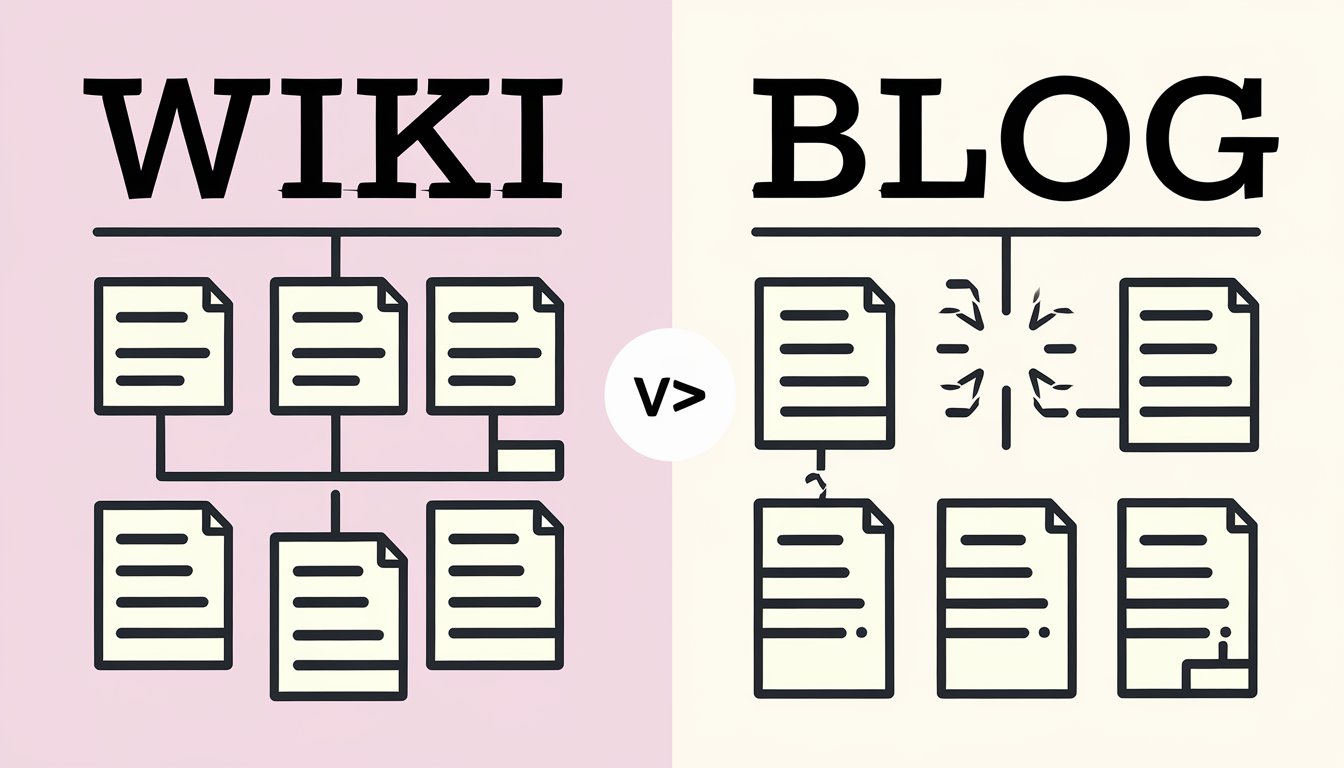When To Update Blog Content: Best Practices for Engagement
Keeping your blog content fresh is crucial for success online. A good content optimization strategy can make your blog more relevant and effective. Websites with active blogs have 434% more indexed pages, giving them a big advantage.
Updating your blog isn’t just about keeping up. It’s about getting the most out of your efforts. Refreshing old posts can boost traffic by up to 106%. This often works better than starting from scratch.
Google likes recent content for timely searches. So, updating your blog can improve your search rankings and draw more visitors. Regular content updates also build trust and credibility with your audience, making you stand out from competitors.
But how often should you update? But how often should you update? Keep reading to uncover the best practices and strategies for updating your blog content effectively.

Signs That Your Blog Content Needs an Update
Updating your blog content is essential for maintaining a strong online presence. Why you should update your blog content becomes clear when you consider how fresh, relevant information can drive more traffic. It can also improve SEO rankings and engage your audience.
Here are key indicators that it’s time to refresh your posts:
- Dropping Keyword Rankings: If your pages are falling in search results, it’s a clear sign your content needs attention.
- Declining Traffic: A drop in blog traffic signals the need for updates. For instance, refreshing a post can lead to significant gains, such as 6,000+ page views and 24 form submissions in just four months.
- Low Conversions: If your posts are no longer converting visitors into leads, revise the content to better align with your audience’s needs.
- Outdated Content: Older posts, especially those written before incorporating current keywords, often need updates. Focus on posts with quality backlinks to maximize their authority.
- Missing Updated Titles: Including the current year in titles can boost engagement, as readers prefer content that feels relevant and up-to-date.
By monitoring these signs and regularly evaluating your blog’s performance, you can keep your content fresh. This will help attract more traffic and drive higher conversions.
How To Identify Underperforming Posts
Spotting underperforming posts is essential for maintaining a successful blog. Here’s how to identify them:
- Conduct a Content Audit: Review key metrics like organic traffic, bounce rates, and time on page to pinpoint low-performing posts.
- Leverage Analytics Tools: Use tools to track falling traffic and engagement. Posts with declining performance may need updates or repurposing.
- Monitor Backlinks: A drop in quality backlinks can indicate your content is losing relevance. Identify older posts with strong links and refresh them to restore authority.
- Evaluate Strategic Fit: Not all outdated posts need updates. If a post no longer aligns with your strategy, consider removing or redirecting it to keep your blog focused and engaging.
Regularly auditing and refining your content ensures your blog remains valuable to readers and effective in achieving your goals.
How Often Should You Review Your Blog Posts?
Keeping your blog up-to-date is key to keeping readers interested. How often you check your content depends on your field and what you write about. For topics that change fast, you might need to check more often. But for content that stays relevant over time, you can update it less.
It’s a good idea to check your blog posts every three to six months. This helps make sure your content is still good and meets what readers are looking for. Refresh old blog posts to optimize your content for search engines, boosting your rankings and increasing traffic.
Updating your blog regularly can really help bring in more visitors. Companies that blog a lot, 16+ times a month, get a lot more traffic than those who blog less.
Your blog upkeep plan should include quick updates and deeper changes. Quick updates are great for posts that do well, while bigger updates are better for posts that aim for specific keywords. By keeping to a regular check-up schedule, you keep your content fresh and relevant. This helps you stand out as an expert in your field.

Benefits of Updating Blog Content Regularly
Regularly updating your blog offers numerous advantages for both traffic and credibility:
- Boosts Traffic: Refreshing old posts can increase traffic by up to 106%, according to a HubSpot study. This underscores the importance of keeping content fresh and relevant.
- Enhances SEO: Search engines prioritize updated content, improving your rankings and driving organic traffic. With 45% of blog traffic often coming from organic search, maintaining current content is vital.
- Engages Your Audience: Regular updates show your commitment to providing value and staying informed. This builds trust, strengthens your brand’s authority, and keeps readers coming back. Notably, 69% of blog visits are to older posts, proving the enduring value of quality updates.
- Balances Content Longevity: Update fast-changing topics quarterly, evolving subjects annually, and stable content every 18-24 months. This approach ensures your site remains valuable and consistently attracts visitors.
By consistently refreshing your content, you reinforce your expertise, engage your audience, and maintain a strong presence in your field.
Updating vs. Creating New Content
When planning your content strategy, you must decide: update old posts or create new ones. Both methods can help your SEO. Updating old content can be more cost-effective. It uses what you already have and saves time.
Search engines also like fresh, relevant content. On the other hand, new content covers new topics and keywords. It brings in fresh views and keeps your audience interested.
New content helps grow your SEO reach but takes time to rank. It adds variety and meets different user needs. How you allocate resources is important. Updating is quicker but still valuable.
Try to mix both to keep your site fresh and appealing. This attracts both search engines and readers.
Best Practices for Updating Your Blog Content
Keeping your blog fresh is essential for staying relevant. Follow these best practices to ensure your content meets readers’ needs and stays competitive:
- Understand Search Intent: Analyze top-ranking pages for your target keywords to identify what readers are looking for. Use tools to find high-volume, relevant keywords to enhance your posts.
- Add Fresh Information: Update posts with new data, examples, and sources to demonstrate your expertise and build trust with readers.
- Address Audience Needs: Run surveys or monitor social media discussions to uncover questions and concerns your audience has, then address them in your content.
- Follow Industry Trends: Stay informed by reading expert insights and attending industry events. Use this knowledge to add updated insights to older posts.
- Prioritize High-Impact Updates: Focus on posts that have lost traffic or require new information. Updating these can save time and often delivers better results than creating new content.
- Show Update Dates: Include a note indicating when the post was last updated. This reassures readers that the content is current and relevant.
Regularly updating your blog not only keeps readers engaged, but also signals to search engines that your site is active. This can boost your rankings and traffic.

Techniques for Effective Content Refreshing
Content rewriting gives your blog posts a fresh start. Begin by doing new keyword research to match today’s trends. This is key for keeping your content interesting to your readers.
Updating data is also important. Swap out old stats for new ones to stay accurate and trustworthy. For instance, HubSpot saw a 106% increase in search traffic after updating their posts. This shows how vital it is to keep your content up-to-date.
Change your headlines and meta tags to get more clicks. Add more successful parts or introduce new sections for a complete view. This makes your content better for users and helps you rank higher in search results.
Make sure your content includes the latest trends and best practices. Use tools like Answer The Public to find out what your audience is curious about. By answering these questions, you make your content more valuable, which can lead to more engagement and shares.
Common Mistakes When Updating Content
Updating blog posts can improve engagement, but avoid these common pitfalls:
- Changing URLs Without Redirects: This causes broken links and traffic loss. Always set up proper redirects.
- Removing Valuable Information: Preserve key details readers rely on. Add new insights while maintaining the core message.
- Neglecting Internal Links: Ensure all links point to relevant, updated pages to keep your site organized and user-friendly.
- Overloading Keywords: Prioritize readability over keyword stuffing. Clear, engaging content always wins.
- Ignoring Relevance: Outdated information hurts credibility. Use tools like Google Analytics to tailor updates to your audience.
Avoid these mistakes to create high-quality, engaging content that resonates with readers and ranks well in search engines.
Tools and Resources for Content Updates
Keeping your blog posts fresh is essential. Here are key tools and resources to streamline the process:
- SEO Software: Tools like Semrush and Google Analytics help analyze content performance, identify posts needing updates, and find effective keywords.
- Content Analysis Tools: These tools check for outdated information, broken links, and optimization opportunities. They also suggest new keywords to enhance SEO and save time.
- Performance Tracking: Google Search Console provides insights into search queries, keyword rankings, and traffic, helping you focus on high-potential posts.
- AI-Powered Writing Assistants: AI tools improve readability, structure, and SEO while generating ideas for new content to keep your blog engaging.
- Editorial Calendars: A well-planned calendar ensures regular updates, maintaining consistency and boosting SEO.
By leveraging these tools, you can keep your content fresh, engaging, and competitive in search rankings.
Collaborating With Guest Contributors
Guest blogging is a top choice for blogger partnerships. It brings in expert insights and diverse content. By inviting industry leaders, you add authority to your blog. This not only improves your content but also draws in new readers.
To find guest contributors, use tools like Google, BuzzSumo, or Alltop. Look for blogs that match your keywords or topics. Keep in mind that some sites may charge for guest posts. Building strong relationships is key, following the 80/20 rule for content that resonates.
Partner with other bloggers for content creation. Share tasks and focus on topics you both enjoy. Exchange networks and introduce each other to editors and journalists. Promote each other’s work on social media to increase your reach. Having an “accountabili-buddy” helps keep you motivated. Attend events together to expand your networks. This teamwork can elevate your blog.
Making Updates Part of Your Strategy
Regular content updates are key to long-term blog success. They boost engagement and traffic. In fact, 53% of marketers see more engagement after refreshing old posts.
Updating content also attracts more visitors. 49% of marketers see higher traffic after making updates, which shows the power of keeping content fresh.
To improve your blog, set clear goals and track your progress. Use an editorial calendar to plan updates. This keeps your content flowing smoothly.
Zapier, a SaaS platform, has stayed at the top of Google rankings by updating one post a year since 2018. This shows the importance of consistent updates.
Embrace the changing world of digital content and commit to ongoing optimization. This will build your authority, boost traffic, and attract leads.
Now, 74% of bloggers see updates as a crucial part of their strategy. By making updates a core part of your plan, you’re ready for the digital future.
Keep Your Blog Fresh: The Key to Long-Term Success
Regularly updating blog content is essential for maintaining relevance, improving SEO, and providing value to your readers. Focus on updating posts when industry trends change, outdated information becomes available, or opportunities arise to improve rankings.
By keeping your content fresh and aligned with your audience’s needs, you ensure your blog remains a trusted resource. This helps it continue to drive engagement over time.
Keeping your blog content fresh and relevant is just one piece of the puzzle for building a successful blog. To truly stay ahead, it’s important to understand every aspect of blogging. This includes crafting engaging posts, optimizing for search engines, and growing your audience.
Ready to take the next step in your blogging journey? Discover more expert guides, actionable tips, and proven strategies to elevate your blog’s performance and reach new heights at After Social.





